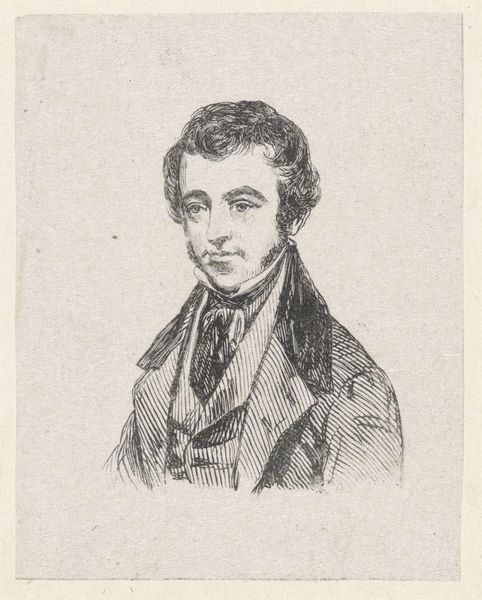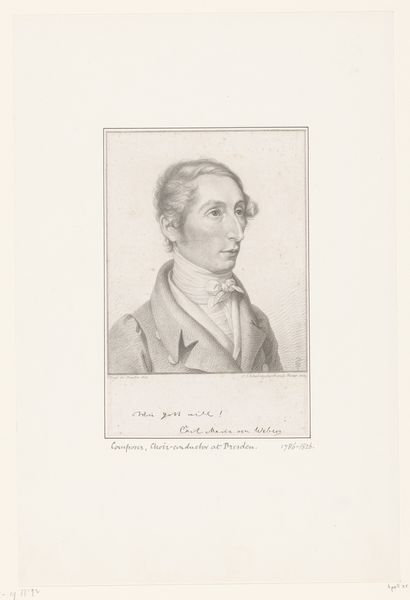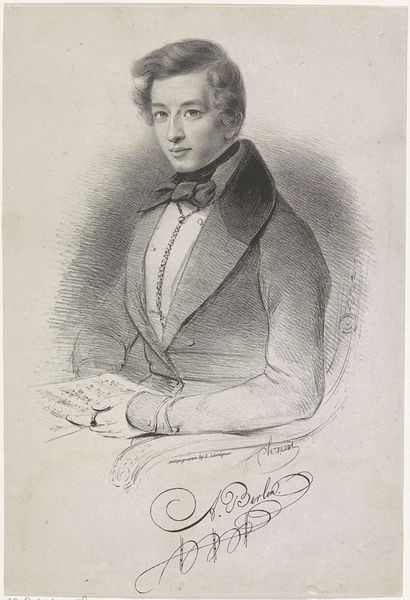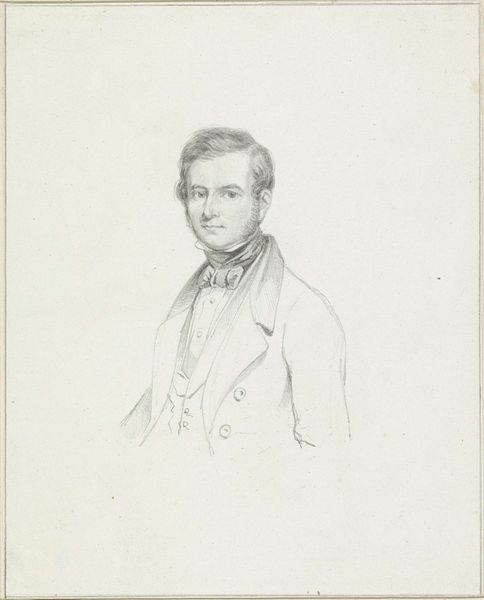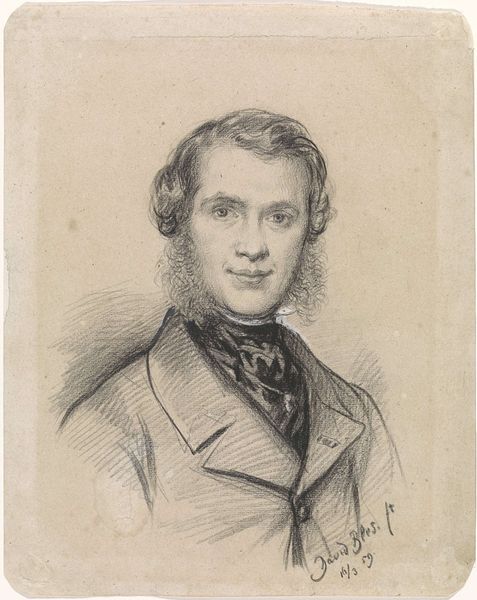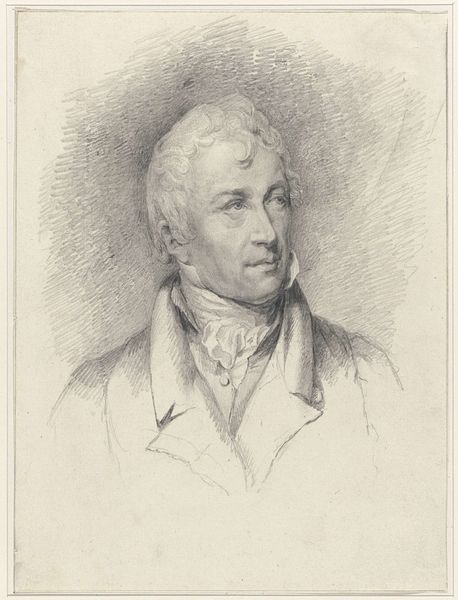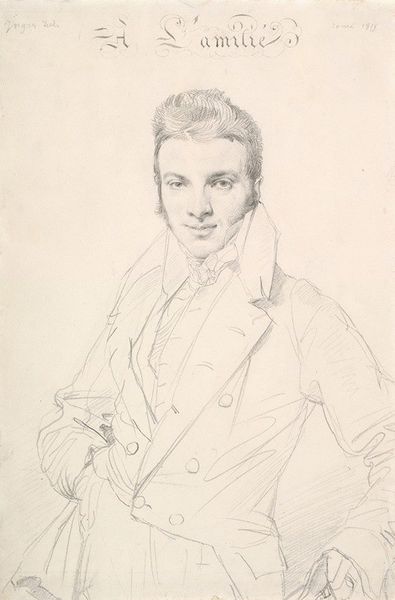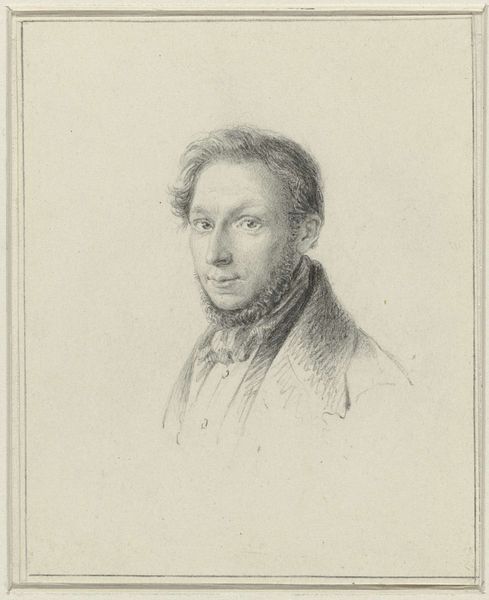
Zelfportret (?) van Bartholomeus Johannes van Hove 1810 - 1850
0:00
0:00
drawing, pencil
#
portrait
#
drawing
#
pencil drawing
#
pencil
#
portrait drawing
#
academic-art
#
realism
Dimensions: height 113 mm, width 88 mm
Copyright: Rijks Museum: Open Domain
Curator: Isn't it fascinating? We have here a presumed self-portrait by Bartholomeus Johannes van Hove. It's a pencil drawing, made sometime between 1810 and 1850, and held in the collection of the Rijksmuseum. Editor: He looks... vaguely worried, perhaps? A slight furrow in the brow, a rather intense gaze. The soft pencil lends a certain delicacy, but the overall impression is one of underlying anxiety. Curator: I think you've hit on something. Portraits of this period often served a social function—projecting an image of stability, success. This drawing feels less about grandstanding and more about introspective contemplation. Look how the details in the coat suggest social position, and contrast that with the focus around the eyes. Editor: And the handling of light is intriguing. Notice how van Hove uses it to model the planes of his face. This highlights bone structure and draws you into those observant, thoughtful eyes. Makes me wonder about his ambitions as an artist, especially when placed in the context of early 19th-century art academies. Was he happy with the prescribed path? Curator: Excellent question! Artists of the era, especially in formal academies, grappled with balancing artistic expression and the demands of patronage and public expectation. This work may well capture that tension – a negotiation between external demands and inner yearnings. Editor: It's as if he's subtly pushing against the established norms while still operating within them. Almost a quiet rebellion etched in pencil. Do you get a sense that even the drawing being "presumed" as a self portrait, as opposed to being definitively labelled, says something about institutional priorities in how to interpret and contextualize artworks? Curator: Yes, exactly! Labelling is always political act, as there are reasons why museums may hesitate to proclaim unequivocally a portrait of self, particularly if the only 'evidence' comes from connoisseurship. Editor: So in a sense, we're looking not just at a potential likeness of van Hove but at a historical moment – how the institutions create art history and thus what and how people come to understand it. Curator: Indeed! The piece encapsulates how portraits reflect and refract both the individual and the societies in which they moved. It also brings the challenges inherent to museums in constructing the stories behind art to the surface. Editor: Food for thought as we stroll on. Thanks!
Comments
No comments
Be the first to comment and join the conversation on the ultimate creative platform.

